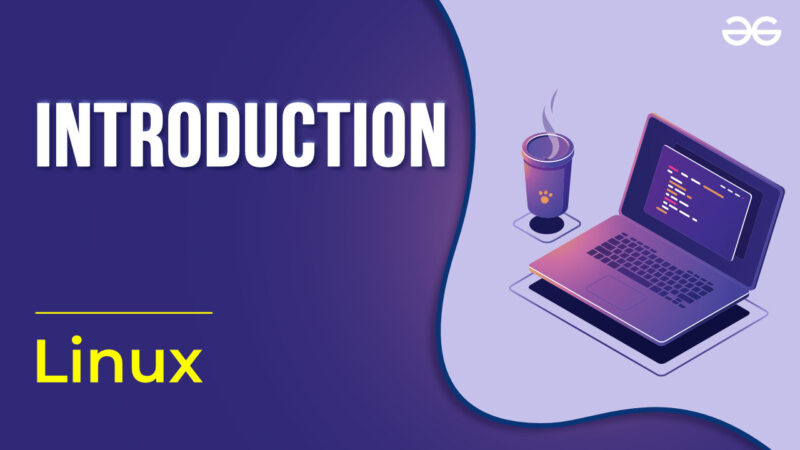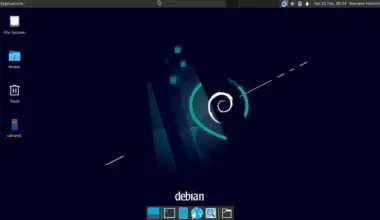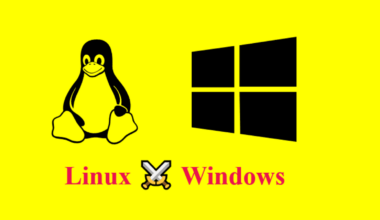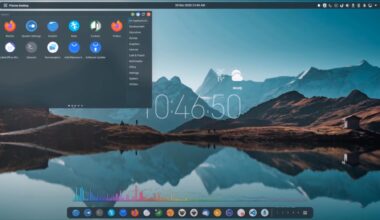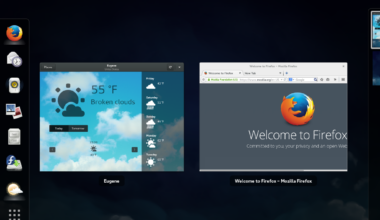Introduction to Linux Desktop
As an open-source operating system, Linux has been around for quite some time. Over the years, it has gained popularity among developers and tech enthusiasts who appreciate its flexibility and versatility. Linux can run on various devices, including desktops, servers, and mobile devices. In this article, we will explore the Linux desktop, its advantages and disadvantages, user experience, and how it compares to other popular operating systems.
Linux desktops come in different flavors, known as distributions. Some of the popular distributions include Ubuntu, Fedora, Debian, and Mint. Each distribution has its unique features and community support, making it a matter of personal preference. Installing Linux on a desktop computer is relatively easy, and most distributions come with a user-friendly installer that guides you through the process.
One of the advantages of Linux desktops is their customizability. With Linux, users have the freedom to modify and tweak the operating system to suit their needs. They can install different desktop environments, program launchers, and customize the look and feel of the interface. Additionally, Linux desktops come with a wide range of software applications that are free and open-source. Users can choose from thousands of software applications that meet their needs, including office productivity software, multimedia editors, and web development tools.
On the downside, Linux desktops may not have the same level of support and compatibility with hardware and software as other operating systems like Windows and macOS. Some hardware drivers may not be available for Linux, leading to compatibility issues. Additionally, some software applications may not be available for Linux, requiring users to use alternative applications or run Windows software through virtual machines or compatibility layers.
In comparison to other operating systems, Linux desktops offer better security and privacy features. Linux is less prone to malware and virus attacks, thanks to its robust security features. Additionally, Linux desktops come with built-in encryption tools and privacy settings that allow users to control their data and protect their privacy.
In terms of user experience, Linux desktops offer a unique and customizable interface that allows users to tailor the operating system to their needs. The desktop environment can be customized to look and feel like Windows or macOS, making the transition easier for users who are new to Linux.
In conclusion, Linux desktops offer a customizable and versatile operating system that is suitable for developers, tech enthusiasts, and users who value privacy and security. While it may have some compatibility issues with hardware and software, Linux desktops offer a unique user experience and a wide range of free and open-source software applications.
Advantages of Linux Desktop
Linux desktops have several advantages over other operating systems, making it a popular choice among developers and tech enthusiasts. Here are some of the advantages of Linux desktops:
1. Free and Open-Source:
One of the most significant advantages of Linux desktops is that they are free and open-source. This means that anyone can download, use, and modify the source code of the operating system without any restrictions. Additionally, Linux desktops come with a wide range of free and open-source software applications that are available for download.
2. Customizability:
Linux desktops are highly customizable, allowing users to modify and tweak the operating system to suit their needs. Users can choose from a variety of desktop environments, including GNOME, KDE, and XFCE, each with its unique features and interface. Additionally, users can customize the look and feel of the interface, change icons, wallpapers, and themes.
3. Stability and Reliability:
Linux desktops are known for their stability and reliability. Unlike other operating systems, Linux rarely crashes or freezes, even when running multiple applications. Additionally, Linux desktops have a built-in system monitor that allows users to monitor system performance and detect any issues before they become a problem.
4. Security:
Linux desktops offer better security features than other operating systems. Linux is less prone to malware and virus attacks, thanks to its robust security features. Additionally, Linux desktops come with built-in encryption tools and privacy settings that allow users to control their data and protect their privacy.
5. Compatibility:
Linux desktops are highly compatible with a wide range of hardware and software. While some hardware drivers may not be available for Linux, most modern hardware is supported by default. Additionally, Linux desktops can run Windows software through virtual machines or compatibility layers, making it easier for users to switch to Linux.
6. Community Support:
Linux desktops have a vibrant and active community of developers and users who provide support and guidance to new users. Users can join forums, chat rooms, and social media groups to get help with any issues they may encounter. Additionally, most Linux distributions come with extensive documentation and user guides, making it easier for users to learn and use the operating system.
In conclusion, Linux desktops offer several advantages over other operating systems, including customizability, stability, security, compatibility, and community support. While it may have some compatibility issues with hardware and software, Linux desktops offer a unique user experience and a wide range of free and open-source software applications.
Disadvantages of Linux Desktop
While Linux desktops have many advantages, they also have some disadvantages that users should be aware of before switching to the operating system. Here are some of the disadvantages of Linux desktops:
1. Learning Curve:
Linux desktops have a steeper learning curve than other operating systems like Windows and macOS. Users who are new to Linux may find it challenging to navigate the system and perform basic tasks. Additionally, Linux commands and tools may be unfamiliar to Windows and macOS users, requiring them to learn new skills.
2. Compatibility Issues:
As mentioned earlier, Linux desktops may have compatibility issues with hardware and software. Some hardware drivers may not be available for Linux, leading to compatibility issues. Additionally, some software applications may not be available for Linux, requiring users to use alternative applications or run Windows software through virtual machines or compatibility layers.
3. Limited Gaming Support:
While Linux desktops are capable of running games, they have limited gaming support compared to Windows. Most game developers prioritize developing games for Windows, with little support for Linux. Additionally, some games may not run on Linux, requiring users to use compatibility layers or virtual machines to run Windows.
4. Lack of Technical Support:
Unlike other operating systems like Windows and macOS, Linux does not have a centralized technical support system. Users who encounter issues with their Linux desktops may have to rely on online forums and communities to get help, which may be time-consuming and unreliable.
5. Fragmentation:
Linux desktops come in different distributions, each with its unique features and community support. While this provides users with a wide range of options, it also leads to fragmentation and compatibility issues. Some software applications may only be available for specific distributions, making it challenging for users to switch between distributions.
In conclusion, Linux desktops have some disadvantages, including a steep learning curve, compatibility issues, limited gaming support, lack of technical support, and fragmentation. However, the benefits of Linux desktops, including customizability, stability, security, compatibility, and community support, outweigh the disadvantages for many users. Before switching to Linux, users should weigh the pros and cons and choose a distribution that meets their needs.
Comparison with Other Operating Systems
When comparing Linux desktops with other operating systems like Windows and macOS, there are several factors to consider.
1. Cost:
One of the significant differences between Linux desktops and other operating systems is cost. Linux desktops are free and open-source, while Windows and macOS require users to purchase a license. Additionally, Linux desktops come with a wide range of free and open-source software applications that are available for download, while Windows and macOS require users to purchase software applications.
2. Customizability:
Linux desktops are highly customizable, allowing users to modify and tweak the operating system to suit their needs. While Windows and macOS offer some level of customization, they are more limited in terms of the modifications users can make.
3. Stability and Reliability:
Linux desktops are known for their stability and reliability. Unlike Windows and macOS, Linux rarely crashes or freezes, even when running multiple applications. Additionally, Linux desktops have a built-in system monitor that allows users to monitor system performance and detect any issues before they become a problem.
4. Security:
Linux desktops offer better security features than other operating systems. Linux is less prone to malware and virus attacks, thanks to its robust security features. Additionally, Linux desktops come with built-in encryption tools and privacy settings that allow users to control their data and protect their privacy.
5. Compatibility:
While Linux desktops may have some compatibility issues with hardware and software, they are highly compatible with a wide range of devices and applications. Most modern hardware is supported by default, and Linux desktops can run Windows software through virtual machines or compatibility layers, making it easier for users to switch to Linux.
6. User Experience:
The user experience of Linux desktops is different from that of Windows and macOS. Linux desktops offer a unique and customizable interface that allows users to tailor the operating system to their needs. The desktop environment can be customized to look and feel like Windows or macOS, making the transition easier for users who are new to Linux.
In conclusion, Linux desktops offer several advantages over other operating systems, including cost, customizability, stability, security, compatibility, and user experience. While there may be some compatibility issues with hardware and software, Linux desktops provide users with a unique and customizable operating system that meets their needs. Before switching to Linux, users should weigh the pros and cons and choose a distribution that meets their needs.
User Experience with Linux Desktop
The user experience with Linux desktops is unique and customizable, making it a popular choice among developers and tech enthusiasts. Linux desktops come with a variety of desktop environments, each with its unique features and interface. Some of the popular desktop environments include GNOME, KDE, and XFCE.
When switching to Linux desktops, users may find it challenging to navigate the system and perform basic tasks due to the steeper learning curve compared to other operating systems like Windows and macOS. However, Linux desktops come with extensive documentation and user guides, making it easier for users to learn and use the operating system.
Customizability is one of the significant advantages of Linux desktops. Users can customize the look and feel of the interface, change icons, wallpapers, and themes. They can also install different desktop environments and program launchers, allowing them to tailor the operating system to their needs. Additionally, Linux desktops come with a wide range of free and open-source software applications that are available for download.
The desktop environment of Linux desktops can be customized to look and feel like Windows or macOS, making the transition easier for users who are new to Linux. Users can choose from a variety of software applications that meet their needs, including office productivity software, multimedia editors, and web development tools.
The stability and reliability of Linux desktops are another advantage of the operating system. Linux desktops rarely crash or freeze, even when running multiple applications. Additionally, Linux desktops have a built-in system monitor that allows users to monitor system performance and detect any issues before they become a problem.
In terms of gaming support, Linux desktops have limited gaming support compared to Windows. Most game developers prioritize developing games for Windows, with little support for Linux. However, Linux desktops can run games through compatibility layers or virtual machines, making it possible for users to play Windows games on Linux.
In conclusion, the user experience with Linux desktops is unique and customizable, making it a popular choice among developers and tech enthusiasts. While there may be a steeper learning curve compared to other operating systems, Linux desktops come with extensive documentation and user guides, making it easier for users to learn and use the operating system. Customizability, stability, and reliability are some of the significant advantages of Linux desktops, making it a suitable operating system for users who value these features.
Final Thought
Linux desktops offer a unique and customizable operating system that provides users with a wide range of advantages. From customizability to stability and security, Linux desktops have several features that make them a favorite among developers and tech enthusiasts. While it may have some compatibility issues with hardware and software, Linux desktops offer a unique user experience and a wide range of free and open-source software applications.
Before switching to Linux, users should weigh the pros and cons and choose a distribution that meets their needs. While the learning curve may be steeper compared to other operating systems, Linux desktops come with extensive documentation and user guides, making it easier for users to learn and use the operating system. Additionally, Linux desktops have a vibrant and active community of developers and users who provide support and guidance to new users.
Overall, Linux desktops offer a flexible and versatile operating system that can meet the needs of various users. Whether you are a developer, tech enthusiast, or a user who values privacy and security, Linux desktops provide a customizable and reliable operating system that offers a unique user experience.
